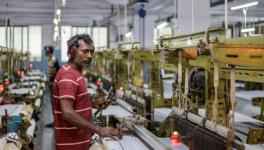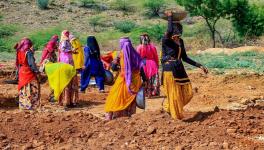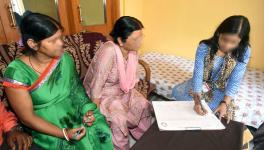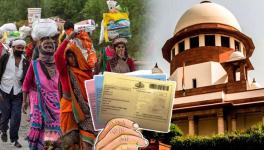Bihar: More Than Half of Migrant Workers Lost Source of Income Due to Lockdown

Image Courtesy: The Logical Indian
Patna: Bihar has witnessed the largest reverse migration in the country following the nationwide lockdown in the wake of COVID-19 pandemic. Most of these workers are still struggling for survival as they have no source of income or livelihood after being rendered jobless in big cities and industrial towns.
This reality was revealed by data from a latest study on the impact of lockdown on migrant household livelihoods and the opportunities for household economic revival through social protection schemes.
As per the study, ‘Effects of COVID 19 on migrant households’, a first of its kind in the state- conducted through survey of returning migrants by UNICEF and Development Management Institute (DMI), about half of the households, 51% have lost complete income and 30% faced major reduction of income due to lockdown. Followed by 12% migrants who have been affected in a minor way and 7% with no impact.
Aditi Thakur of DMI has said that even though sample size of the survey was small, it will be increased to include more workers in the second part.
Among the migrants who had returned home in the month of May, over two-thirds of the households who had reported complete loss of income due to lockdown had said that they have finances that are sufficient for only less than a month.
The study has also highlighted that job loss is relatively higher among the Scheduled Castes and Scheduled Tribes. About one-fifth of them reported that their primary source of income was from government schemes. Almost all migrant households received ration from the public distribution system (PDS), although only 42% reported sufficiency of ration.
Also read: Covid-19 and Politics in the Home State of Migrant Workers
Some other points raised by the survey include the vulnerability of children and women, and recommends for the enrolment of migrant workers’ children in school and providing all the educational benefits besides ensuring immunisation programs for families.
As per the study, the choosing of more than 84% of Bihar districts under the Pradhan Mantri Garib Kalyan Rojgar Abhiyan (PMGKRA) of government suggests it is one of the most affected states in India by the reverse migration of workers from big cities to their hometowns and villages. It estimates that a total of 1.88 million migrant labourers had returned to Bihar till July 10.
According to the government's own admission, nearly 2.1 million migrant workers returned to Bihar during the lockdown. The government had conducted skill mapping of 14 lakh migrants till last month to provide them suitable jobs.
About 70% of the returning migrants belong to the socially backward category. The distribution of migrants as per their social category are 29% belong to Other Backward Castes (OBCs), 23 % belong to Extremely Backward Caste (EBC), 21% belong to General category, 20% in Scheduled Caste (SC) and 3% Scheduled Tribe .
Dr. Urvashi Kaushik, Social Policy Specialist, UNICEF Bihar said that the reverse migration of more than 2 millions migrant workers due to job losses and uncertainty has caused unprecedented hardships and devastating consequences for migrant labourers and their families. Moreover, it has rendered women and children more vulnerable as they face immediate problems relating to food, shelter, health care and loss of wages besides psycho-social issues like anxiety, fear and stigma.
Shivendra Pandya, Programme Manager, UNICEF Bihar said that in the pandemic time, reverse migration has become a reality and it has impacted the women and children the most in terms of greater difficulty in accessing even the basic services. This study also establishes that children in the age group of 14-17 years have migrated in large numbers with their families.
The study pointed that COVID-19 has severely impacted migrant labourers and their families in multiple ways and thus it becomes necessary for Bihar government to take urgent actions to respond to the crisis in its recommendations.
It stressed on increasing the number of days of employment under Mahatma Gandhi National Rural Employment Guarantee Act (MGNREGA) from existing 100 to 200 days. If adequate work is not available, provide unemployment benefit as per MGNREGA guidelines. Interestingly, the state government has no official data of how many workers from Bihar are employed outside the state.
According to government officials, after the CM has issued directions to create opportunities for poor labourers, especially migrant workers, the government has been planning on starting work on big infrastructure projects, employment schemes, the much-hyped ‘Jal Jeevan Hariyali’ mission to create water bodies and other work.
However, it is a big challenge amid a worsening pandemic – with Bihar at 1,07,945 COVID-19 cases and more than 8.1 million people affected by the floods and thousands of flood victims have taken shelter on high-rise embankments, national highways to survive.
Get the latest reports & analysis with people's perspective on Protests, movements & deep analytical videos, discussions of the current affairs in your Telegram app. Subscribe to NewsClick's Telegram channel & get Real-Time updates on stories, as they get published on our website.
























